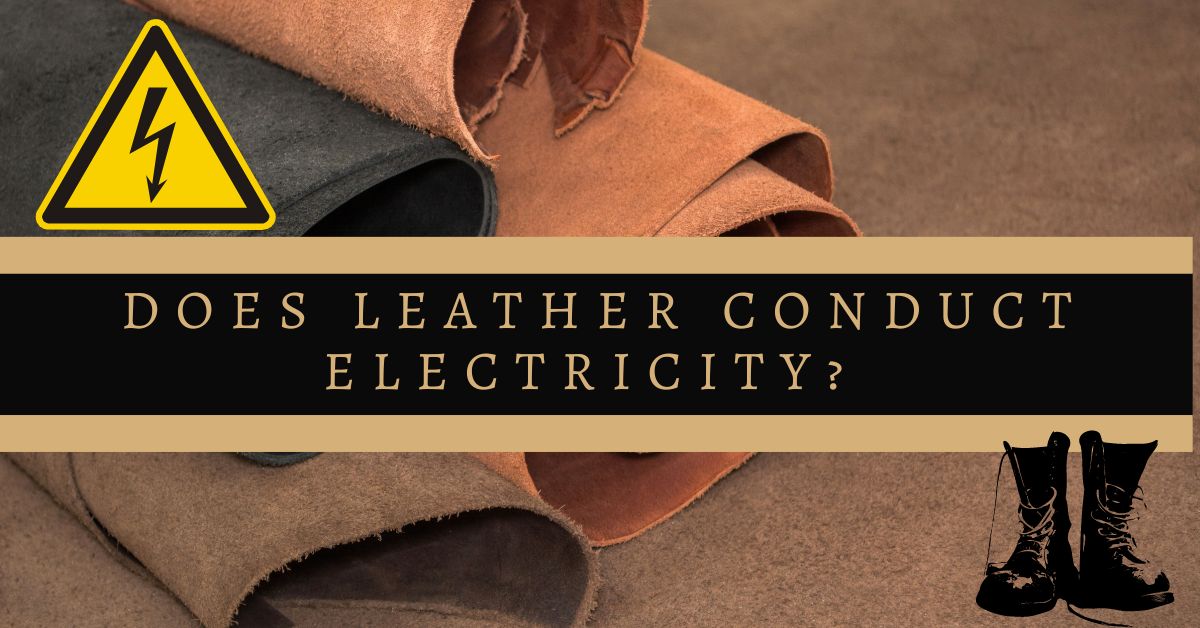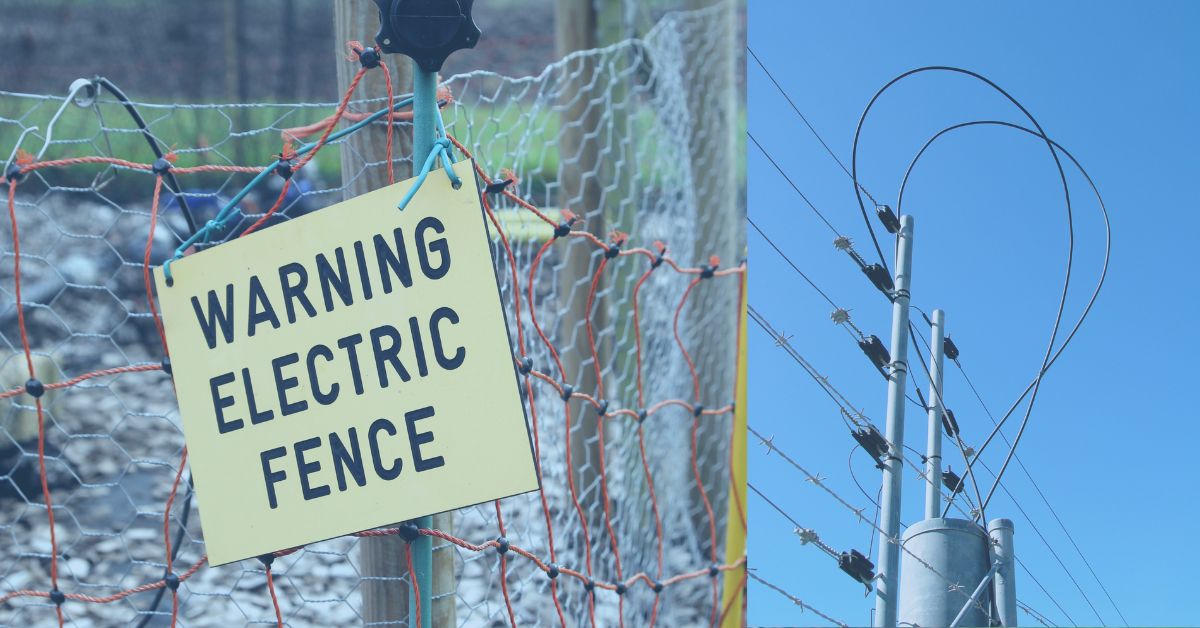Hello, how are you? I hope you are happy in life, welcome to our blogs! I hope you like this article of mine. I try to share with you about electrical safety in every article.
I always try to share with you the knowledge that no blogger has given you before today. Let’s move on does leather conduct electricity? Get complete information about
Introduction
I often think about the materials I use daily, especially leather-based materials. Leather is commonplace in numerous industries, from style to electrical safety.
One query that regularly pops up is: **Does leather conduct electricity?** In this article, I’ll discover leather’s electric properties, how it reacts to strength, and why it is usually utilized in protective gear.

Key Takeaways
- Leather is generally an insulator: It does not conduct electricity in its dry state but can become conductive when wet.
- Moisture increases conductivity: Wet leather can allow electricity to pass through due to the presence of water.
- Used in protective gear: Leather is commonly used in safety gloves for electricians, offering physical protection from cuts and abrasions.
- Conductive leather is emerging: Innovations in material science have led to the development of conductive leather for use in wearable technology.
- Prevents static buildup: Leather helps reduce static charge accumulation, making it safer in environments with sensitive electronic equipment.
What is Leather Made Of? Understanding Its Composition
Leather comes from the skin of animals, primarily cows, and goes through a tanning system to make it durable. It includes natural fibers, proteins, and oils, giving leather-based strength and flexibility.
The composition of leather-based products plays a prominent role in how they interact with energy.
How Leather’s Natural Properties Affect Conductivity
I’ve discovered that leather, in its natural state, isn’t considered a power conductor. The proteins and fibers within leather create an insulating effect, which means it resists the go-with-the-flowrgy flow.
This insulating property is why I regularly see leather used in defensive equipment, like electrician gloves.
Can Leather Be a Conductor? Exploring Electrical Conductivity
I first need to define conductivity to understand whether leather-based can behavior power. Conductivity is the ability of a material to allow electric modern to skip through it. Materials like metals are fantastic conductors, even as substances like rubber are insulators.
Is Leather a Good Insulator or Conductor?
I’ve learned that leather-based products fall somewhere in between. While it’s not a strong conductor like copper or aluminum, leather does have insulating properties, particularly in its dry kingdom.
Leather’s natural oils and fibers make it difficult for power to pass through. However, it isn’t always as insulating as rubber or plastic and is often used for electrical insulation.
Practical Applications: Leather in Electrical Engineering and Safety
One realistic use of leather I discover interesting is its position in **protection gloves** for electricians. But why use leather when materials like rubber are better insulators? The answer lies in leather’s sturdiness and comfort.
Why Leather is Used for Safety Gloves in Electrical Work

I’ve seen that leather-based gloves offer safety from bodily hazards like cuts, burns, and abrasions. While leather-based might not be the best material for high-voltage insulation, it’s regularly combined with rubber gloves to offer electric insulation and physical protection.
How Does Leather React to Electric Current?
Now that I recognize leather-based is mainly an insulator, I need to apprehend how it reacts while exposed to strength. Leather’s response to energy relies upon several elements.
Factors That Influence Leather’s Conductivity
- Moisture: I’ve discovered that leather’s conductivity increases when wet. Water is a conductor, so leather absorbs moisture and becomes more conductive. I constantly avoid using leather-based gloves in moist environments without additional protection.
- Tanning Process: Some leather is treated with chemicals that could slightly alter its electric properties. However, well-known tanned leather-based leather continues to be, in large part, non-conductive.
Does Wet Leather Conduct Electricity? The Science Behind It
When leather gets moist, its capacity to conduct electricity changes. Water contains ions that can carry electric current, and while leather absorbs water, it allows strength to skip through more efficiently.
How Moisture Changes Leather’s Electrical Properties
The more moisture leather-based absorbs, the more conductive it turns into. If I use them in moist conditions, this can make leather gloves risky for electrical work.
For this cause, I regularly see that leather gloves used by electricians are combined with a rubber layer to hold insulation in wet environments.
Insulating vs. Conductive Materials: How Does Leather Compare?
To recognize leather’s position in electrical protection, I want to evaluate it with other not unusual substances utilized in insulation.
- Rubber: Rubber is an exquisite insulator frequently used in electric safety devices like gloves and boots. Unlike leather, rubber maintains its insulating properties even when moist.
- Plastic: Plastic is another common insulator for wiring and electrical gadgets. It is lightweight and non-conductive, even if exposed to moisture.
- Leather: Leather is a weaker insulator than rubber and plastic but is still used in unique situations requiring durability.
Why Electricians Use Leather for Safety Gear
I’ve noticed that leather is no longer typically used in electrical protection equipment because it is a sturdy insulator. It is long-lasting, heat-resistant, and offers safety from mechanical risks.
Electricians frequently wear leather-based gloves over rubber gloves to provide electric insulation and protection from cuts and burns.
Leather vs. Rubber: Which is Better for Electrical Protection?
While rubber is better for electric insulation, leather provides physical protection and heat resistance. The combination of leather and rubber is often utilized in protection gloves to offer the best of both worlds.
Can Leather Be Made Conductive? Modern Innovations in Material Science
I’ve discovered that leather is historically a non-conductive cloth, but with cutting-edge advancements, conductive leather is now a fact. Researchers have found ways to make leather-based conductive by treating it with unique materials.
Exploring Conductive Leather and Its Uses in Technology
Conductive leather is created by adding conductive materials like graphene or silver to the leather at some stage in processing.
This new form of leather has ability packages in a wearable generation, in which flexibility and conductivity are each desired. For example, conductive leather may be used in clever gloves that sense contact and motion.
The Role of Leather in Static Electricity Protection
One area in which I discovered leather performs a significant role in stopping static energy. Leather shoes, belts, and other add-ons assist lessen the buildup of static prices, making it safer to work around sensitive digital systems.
Does Leather Prevent Static Charge Accumulation?
Yes, I’ve seen that leather-based can help prevent static charge accumulation. This is particularly beneficial in manufacturing facilities, where static power can damage equipment or cause sparks.
Leather within the Fashion Industry: Is It Safe Around Electronics?
Leather is widely used in fashion, from jackets to footwear. But is it secure to wear leather around electronics? In most instances, I’ve learned that leather-based does now not pose any threat, as it is a non-conductive material.
However, as stated in advance, wet leather can emerge as more conductive, so I need to work out warnings in certain conditions.
Why Leather is Popular in Electrical Safety Apparel
Leather’s popularity in electrical safety clothing comes from its ability to protect against **bodily hazards** in preference to its insulating properties.
It’s used in gloves, boots, and aprons because it resists cuts, warmth, and sparks, making it a precious fabric in numerous industries.
Benefits of Leather for Electricians and Technicians
- Durability: Leather is tough and lengthy-lasting, making it ideal for environments where people cope with hard or sharp objects.
- Heat Resistance: Leather can resist excessive temperatures, making it appropriate for sparks or warmth duties.
- Comfort: Leather is flexible and comfy, even for lengthy periods.
How To Test Leather for Electrical Conductivity at Home
If I’m curious about testing leather’s conductivity, I can do a simple experiment at home.
Simple Methods for Understanding Leather’s Properties
I can use a multimeter to test if leather conducts energy. I might vicinity the probes of the multimeter on different points of the leather-based.
If the leather is dry, I’ll likely see no analyzing, which means it’s not conducive. I might also get a small study if the leather is moist because of the water’s conductivity.
FAQs
Can leather be used for electrical insulation?
I’ve found that leather-based isn’t a robust insulator but is frequently used with rubber for safety in electrical paintings.
Does leather-based conduct energy when moist?
I’ve discovered that wet leather can conduct strength because water will increase its conductivity.
Why do electricians put on leather-based gloves?
Electricians wear leather gloves for physical safety in opposition to cuts, heat, and sparks, often over rubber gloves that offer electric insulation.
Is leather-based safe around electronics?
Yes, I’ve learned that leather-based is safe around electronics as it’s ordinarily non-conductive.
Can leather-based be made conductive?
The modern generation has made conductive leather by treating it with substances like graphene or silver.
Conclusion: Is Leather a Conductor, Insulator, or Something in Between?
In conclusion, **I’ve discovered that leather is generally an insulator**. It no longer conducts energy in its dry, natural state, making it an appropriate cloth for specific protective gear.
However, leather can become more conductive when wet, so it’s now not the quality material for direct electrical insulation. Leather’s central position in electrical paintings is to offer bodily protection, no longer electric insulation.
By studying leather’s properties and its use in exclusive industries, I can see why there is a widespread preference for style and safety. While leather isn’t a super electric insulator, its combination with other substances like rubber makes it a treasured device in many fields.




